Study on the Effectiveness of Reinforcing Bar Insertion Work with a Circular Pipe
Abstract
1. Introduction
2. Lift-Up Experiment
2.1. Experimental Condition
2.1.1. Device and Materials
2.1.2. Procedure
2.1.3. Experimental Cases
2.2. Experimental Results
2.2.1. Slope Failure Angle
2.2.2. Bending Strain of the Core Bar
3. Numerical Analysis
3.1. Analytical Condition
3.2. Analytical Result
4. Water Sprinkling Experiment
4.1. Experimental Condition
- Case A: no countermeasures.
- Case D-1: single pipe with small diameter.
- Case F-2: three pipes with large diameters.
4.2. Results for Representative Cases
4.2.1. No Countermeasure (Case A)
4.2.2. Single Pipe with Small Diameter (Case D-1)
4.2.3. Three Pipes with Large Diameter (Case F-2)
4.3. Summarized Results
5. Conclusions
- (1)
- In the lift-up experiment, the failure angle in the case of reinforcing bar insertion with a circular pipe was higher than that in the case of reinforcing bar insertion without a circular pipe. Additionally, the larger the pipe diameter and number of pipes, the more stable the slope at higher slope angles.
- (2)
- The larger the pipe diameter, the greater the load applied to the pipe and core bar. This is because a large-diameter pipe can support a wide range of soil on the pipe. The greater the number of pipes, the lower the load applied to the pipes and core bars. This is because the load is distributed to multiple pipes.
- (3)
- When the pipe diameter was small, the soil passed through the gaps. When the pipe diameter was large, surface failure was observed. When the pipe diameter was middle, both failure modes were observed.
- (4)
- Assuming that all the lateral loads acting on the pipes are transmitted to the core material, the existing load estimation formula yields results close to the lateral load calculated from the experimental results. This indicates that the maximum load applied to the core bar immediately before the soil pass-through could be estimated.
- (5)
- In the water sprinkling experiment, the larger the pipe diameter and the greater the number of pipes, the longer time it took for the slope to fail. This suggests that using more pipes with larger diameters could contribute to extending the time before a disaster occurs.
- (6)
- In the case of a single countermeasure, the smaller the maximum gap size, the more soil clump was formed on the countermeasure, and as a result, the greater the maximum strain of the core bar. In the case of the three countermeasures, because the gap was small, the soil eroded and flowed out gradually before forming a soil clump. There was a similar strain in the core bar regardless of the diameter of the pipes.
- (7)
- In this experiment, due to the use of a small-scale box under a gravitational field, the confining pressure acting on the sand differs from that of a full-scale slope. The ground material used was also a uniform type of sand, which does not represent the complexity of actual slopes. To address these discrepancies, full-scale experiments on real slopes will be conducted in future studies.
Author Contributions
Funding
Data Availability Statement
Acknowledgments
Conflicts of Interest
Correction Statement
Abbreviations
| W | width of the box |
| D | width of the countermeasures |
| D1 | center-to-center interval between countermeasures |
| D2 | gap between countermeasures |
| D3 | maximum gap between two countermeasures or between a countermeasure and sidewall |
| c | cohesion |
| ϕ | angle of internal friction |
References
- Sassa, K.; Fukuoka, H.; Scarascia-Mugnozza, G.; Evans, S. Earthquake-induced-landslides: Distribution, motion and mechanisms. J. Soil Found. 1996, 36, 53–64. [Google Scholar] [CrossRef]
- Uzuoka, R.; Sento, N.; Kazama, M.; Ueno, T. Landslides during the earthquakes on May 26 and July 26, 2003 in Miyagi, Japan. J. Soil Found. 2005, 45, 149–163. [Google Scholar] [CrossRef]
- Yamamoto, K.; Nagakawa, K.; Hira, M. Investigation of shallow landslide scars on Shirasu natural slopes from the viewpoint of forest ecology and geotechnical engineering. Jpn. Geotech. Soc. Spec. Publ. 2016, 2, 1035–1039. [Google Scholar] [CrossRef]
- Alvioli, M.; Guzzetti, F.; Rossi, M. Scaling properties of rainfall-induced landslides predicted by a physically based model. Nat. Hazards Earth Syst. Sci. 2014, 14, 2903–2916. [Google Scholar] [CrossRef]
- Martelloni, G.; Bagnoli, F. Infiltration effects on a two-dimensional molecular dynamics model of landslides. Nat. Hazards Earth Syst. Sci. 2012, 12, 3755–3764. [Google Scholar] [CrossRef]
- Rundeddu, E.; Lizárraga, J.J.; Buscarnera, G. Hybrid stochastic–mechanical modeling of precipitation thresholds for shallow landslide initiation. Landslides 2021, 18, 843–858. [Google Scholar] [CrossRef]
- Van Asch, T.W.J.; Malet, J.P.; Van Beek, L.P.H.; Amitrano, D. Techniques, advances, problems and issues in numerical modelling of landslide hazard. Bull. Société Géologique Fr. 2007, 178, 65–88. [Google Scholar] [CrossRef]
- Do, V.V.; The, V.T.; Tran, V.T.; Nguyen, V.D. Rainfall-Induced Soil Slope Failure: Stability Analysis and Probabilistic Assessment, Case Study in Sapa, Vietnam; CRC Press: Boca Raton, FL, USA, 2023. [Google Scholar]
- Guzzetti, F.; Peruccacci, S.; Rossi, M.; Stark, C.P. The rainfall intensity–duration control of shallow landslides and debris flows: An update. Landslides 2008, 5, 3–17. [Google Scholar] [CrossRef]
- Sato, T.; Okada, Y.; Uchida, T.; Wang, G. Sliding layer estimation of shallow landslides on volcanic slopes using electrical resistivity surveys. Geoenvironmental Disasters 2020, 7, 5. [Google Scholar]
- Tsai, Y.H.; Chiang, S.H. Modeling rainfall-induced shallow landslides for emergency response using a physically based method. Nat. Hazards 2018, 91, 745–766. [Google Scholar]
- Baum, R.L.; Savage, W.Z.; Godt, J.W. TRIGRS—A Fortran Program for Transient Rainfall Infiltration and Grid-Based Regional Slope-Stability Analysis (Open-File Report 02-424); US Geological Survey: Reston, VA, USA, 2002. [Google Scholar]
- Iverson, R.M. Landslide triggering by rain infiltration. Water Resour. Res. 2000, 36, 1897–1910. [Google Scholar] [CrossRef]
- Godt, J.W.; Baum, R.L.; Lu, N. Landsliding in partially saturated materials. Geophys. Res. Lett. 2009, 36, L02403. [Google Scholar] [CrossRef]
- Sidle, R.C.; Ochiai, H. Landslides: Processes, Prediction, and Land Use. In Water Resources Monograph Series; American Geophysical Union: Washington, DC, USA, 2006; Volume 18. [Google Scholar]
- Rosso, R.; Rulli, M.C.; Vannucchi, G. A physically based model for the hydrologic control on shallow landsliding. Water Resour. Res. 2006, 42, W06410. [Google Scholar] [CrossRef]
- Papa, M.N.; Medina, V.; Bateman, A. Shallow landslide hazard assessment using a physically based model in a Mediterranean basin. Nat. Hazards Earth Syst. Sci. 2013, 13, 1285–1297. [Google Scholar]
- Lu, N.; Godt, J.W. Hillslope Hydrology and Stability; Cambridge University Press: Cambridge, UK, 2013. [Google Scholar]
- Fan, X.; Scaringi, G.; Korup, O.; West, A.J. Earth and debris slides. Earth-Sci. Rev. 2019, 196, 102887. [Google Scholar]
- Acharya, G.; Cochrane, T.A.; Davies, T.R. Quantifying and mapping the effects of rainfall on shallow landslides in a GIS environment: A case study from Otago, New Zealand. Environ. Earth Sci. 2014, 71, 3907–3918. [Google Scholar]
- Greco, R.; Damiano, E.; Olivares, L. Hydrological modeling of shallow landslides triggered by rainfall. Nat. Hazards 2012, 61, 1273–1293. [Google Scholar]
- He, Y.; Wei, Y.; Zhang, Y. Spatiotemporal evolution and susceptibility analysis of shallow landslides triggered by heavy rainfall in Sichuan, China. Nat. Hazards 2024, 120, 479–504. [Google Scholar]
- Bogaard, T.A.; Greco, R. Landslide hydrology: From hydrology to pore pressure. WIREs Water 2016, 3, 439–459. [Google Scholar] [CrossRef]
- Capparelli, G.; Versace, P. Rainfall-triggered shallow landslides: A distributed hydrological-geotechnical model. Adv. Geosci. 2005, 2, 21–26. [Google Scholar]
- Chengtang, W.; Hao, W.; Weimin, Q.; Shuan, W.; Huan, T.; Kun, F. Behavior of pile-anchor reinforced landslides under varying water level, rainfall, and thrust load. Eng. Geol. 2023, 325, 107293. [Google Scholar]
- Fei, C.; Keizo, U. Numerical analysis of the stability of a slope reinforced with piles. J. Soil Found. 2000, 40, 73–84. [Google Scholar]
- Liu, S.; Luo, F.; Zhang, G. Centrifuge model tests on pile-reinforced slopes subjected to drawdown. J. Rock Mech. Geotech. Eng. 2020, 12, 1290–1300. [Google Scholar] [CrossRef]
- Xinli, H.; Dongzi, L.; Lifei, N.; Chang, L.; Xuan, W.; Ru, F. Development of soil-pile interaction and failure mechanism in a pile reinforced landslide. Eng. Geol. 2021, 294, 106389. [Google Scholar]
- Fujiwara, K. Small model test on reinforcing bar insertion work with a circular pipe. In Proceedings of the 12th Symposium on Sediment-Related Disasters, Niigata City, Japan, 30 October–1 November 2024; pp. 143–148. Available online: https://committees.jsce.or.jp/seibu_s01/node/77 (accessed on 19 June 2025).
- Majid, M.R.; Sarah, K.I. Optimal Plastic Analysis and Design of Pile Foundations Under Reliable Conditions. Period. Polytech. Civ. Eng. 2021, 65, 761–767. [Google Scholar] [CrossRef]
- Wang, L.; Fujiwara, K. Experimental study on reinforcement Insertion work using pipes during rainfall. Annu. Meet. Jpn. Soc. Civ. Eng. 2024, 79, III-334. [Google Scholar]

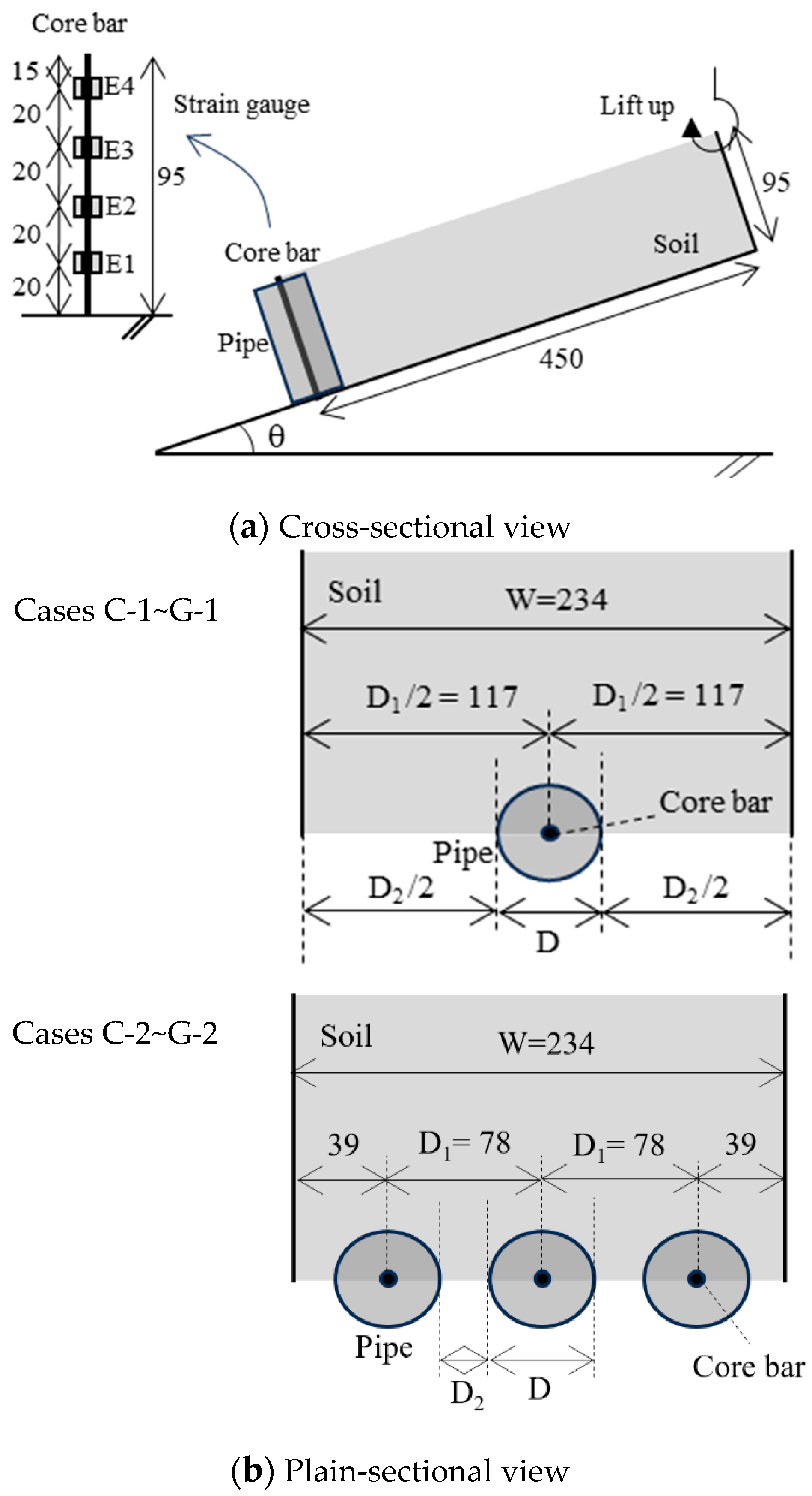
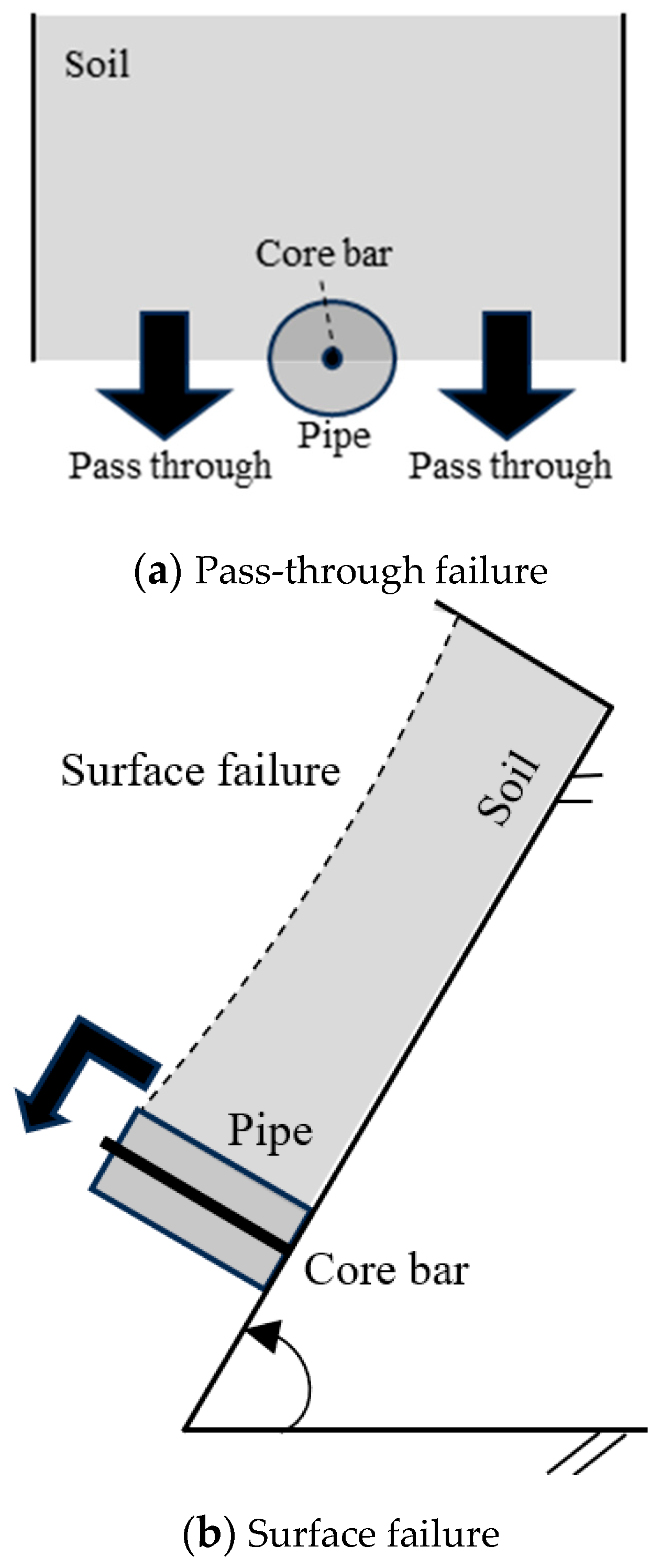





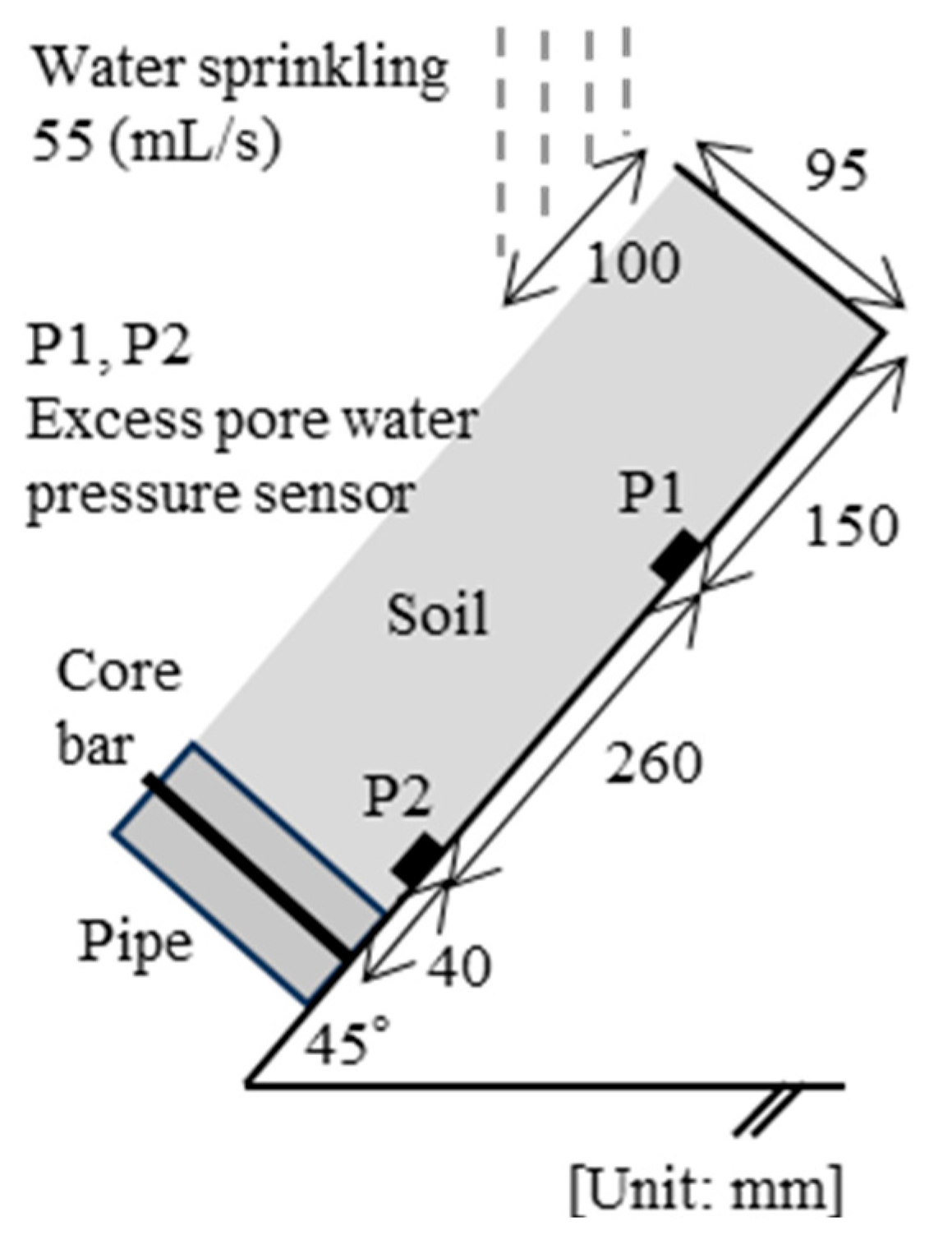
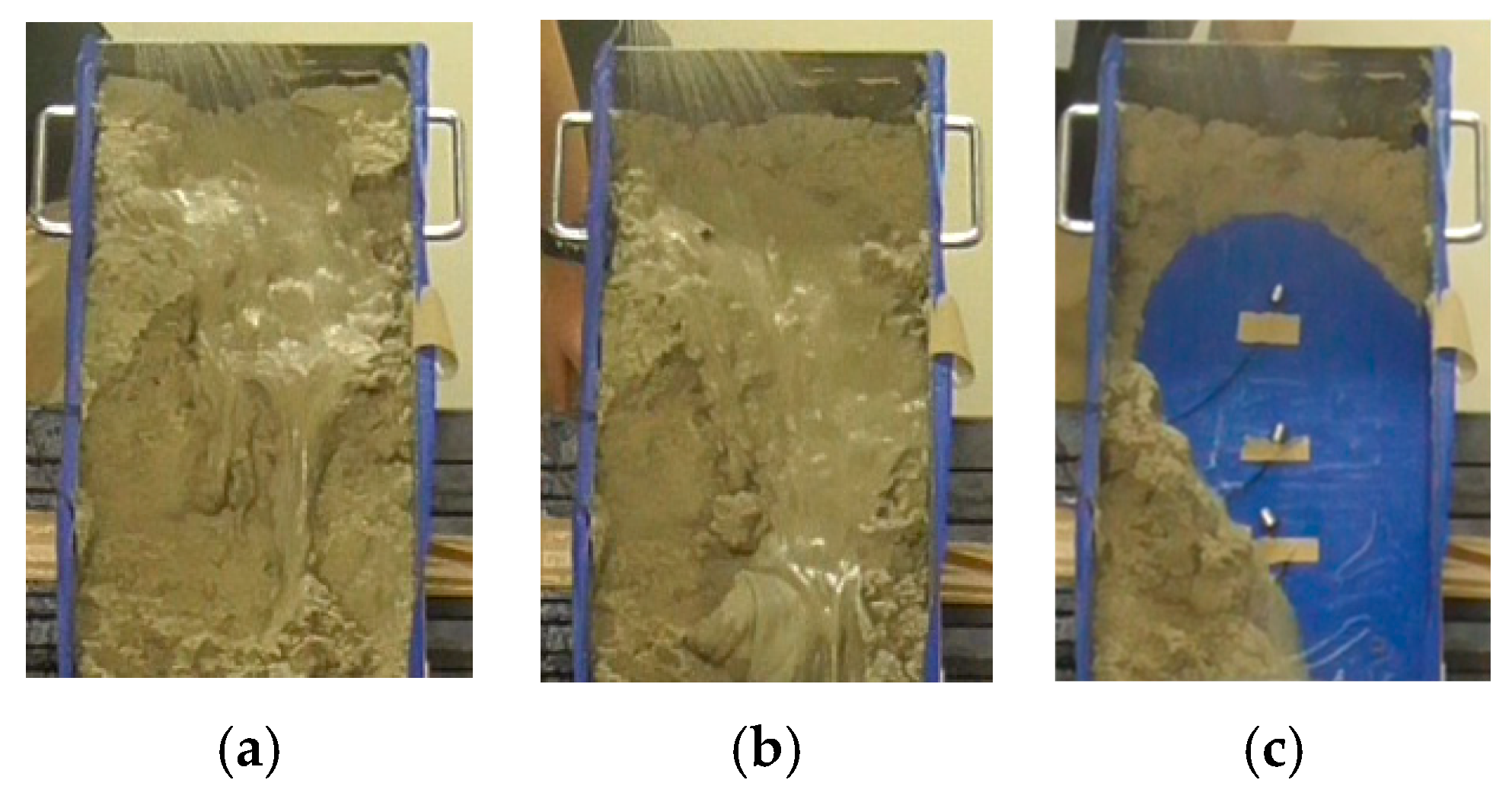
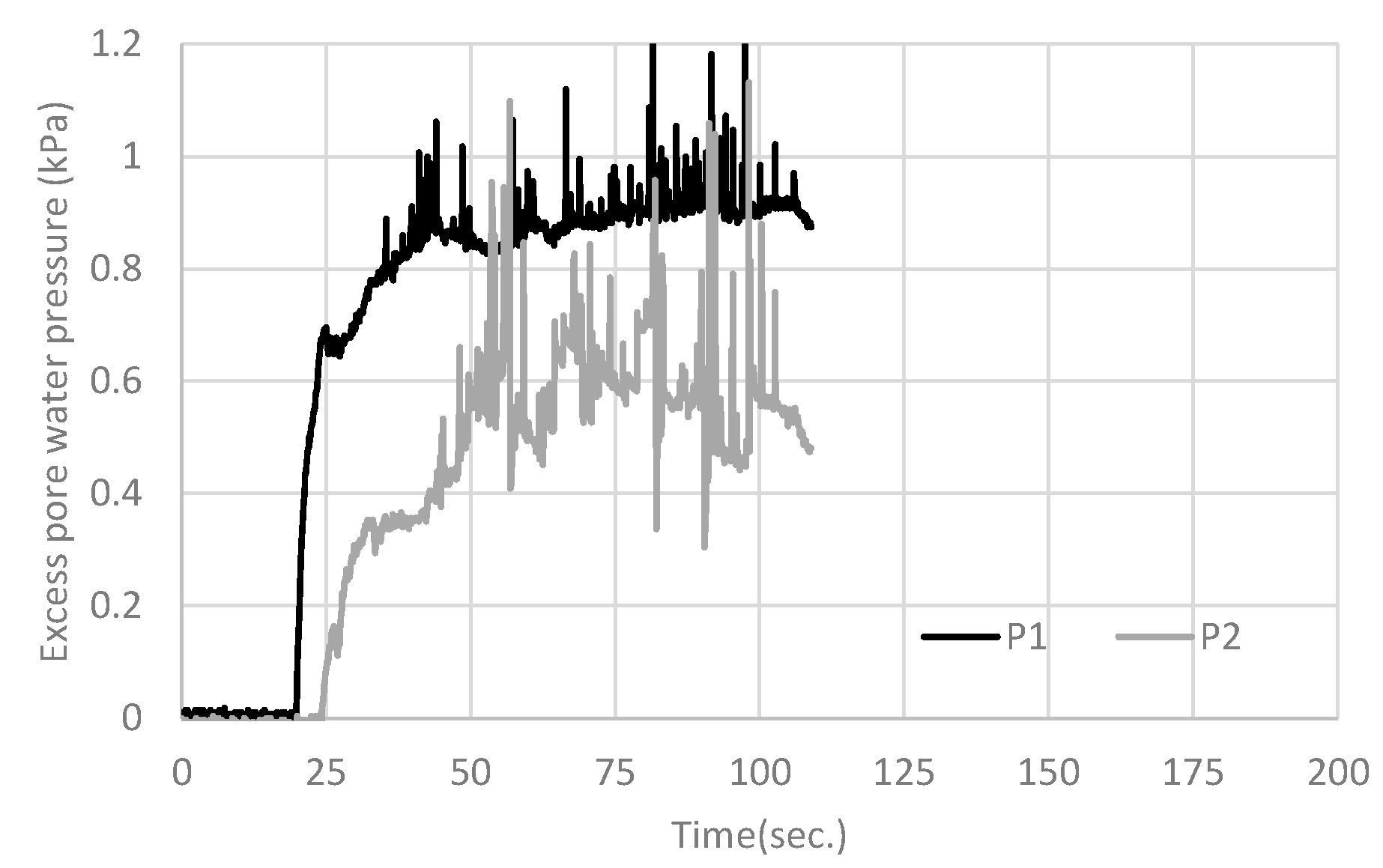


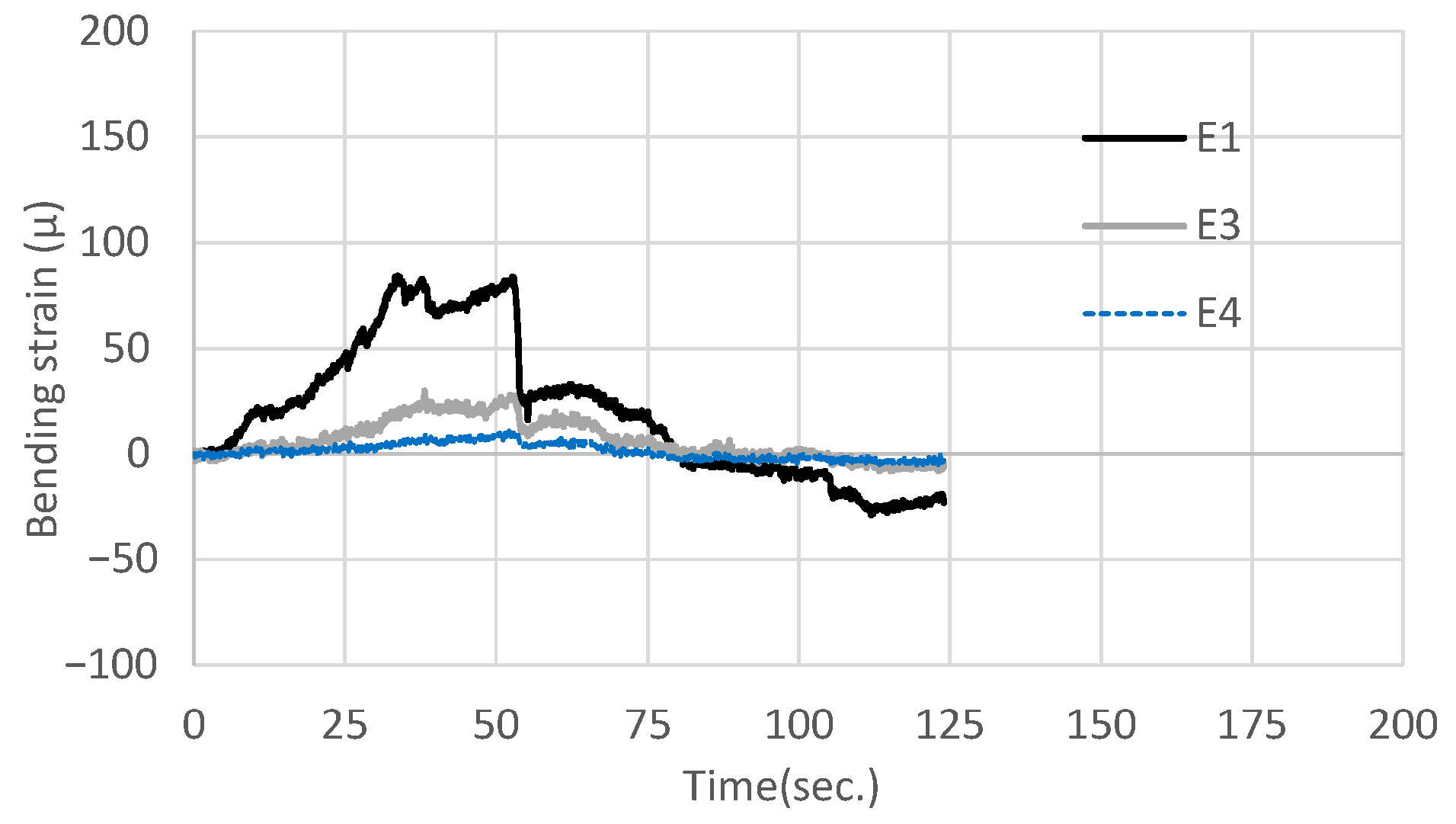

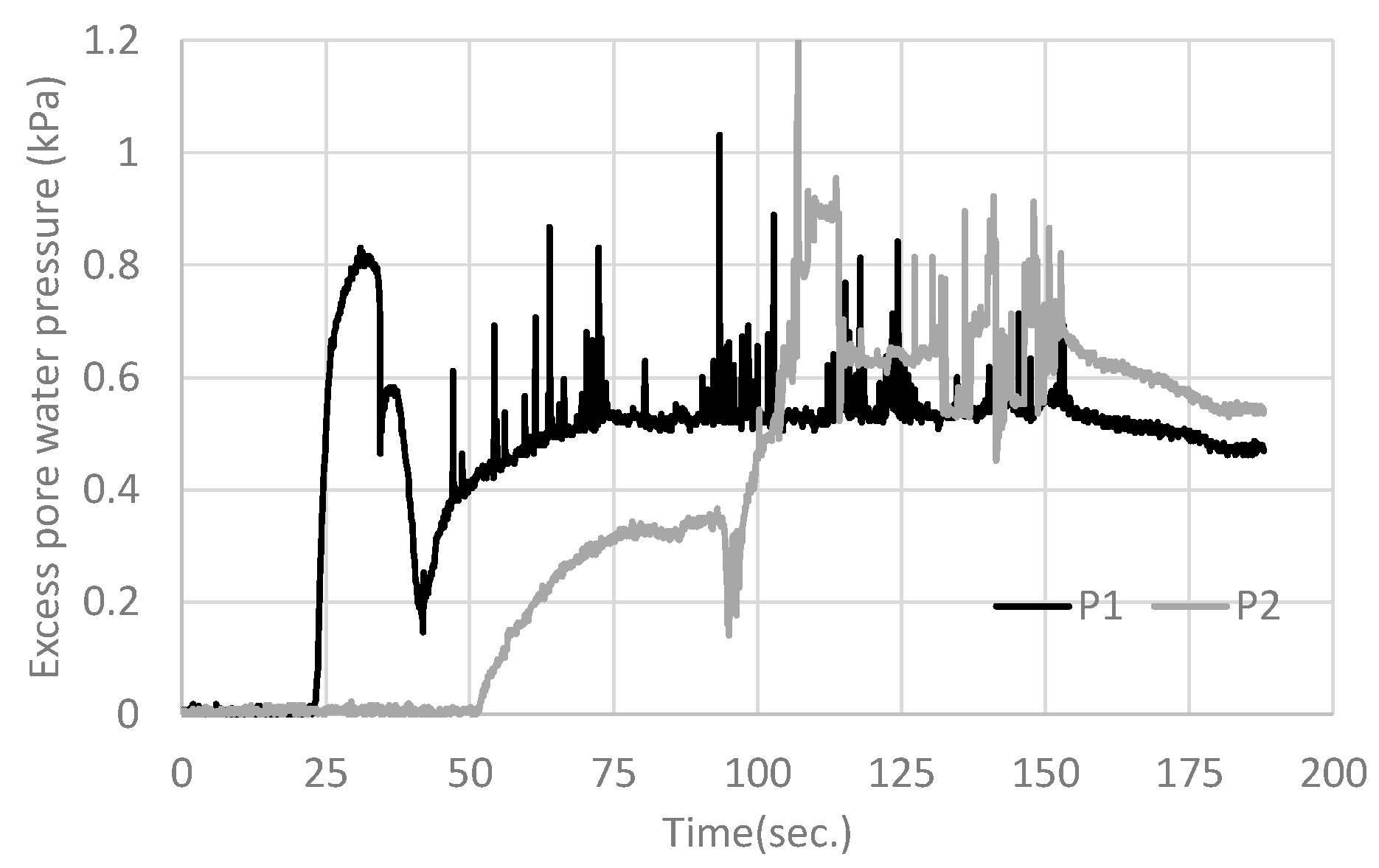
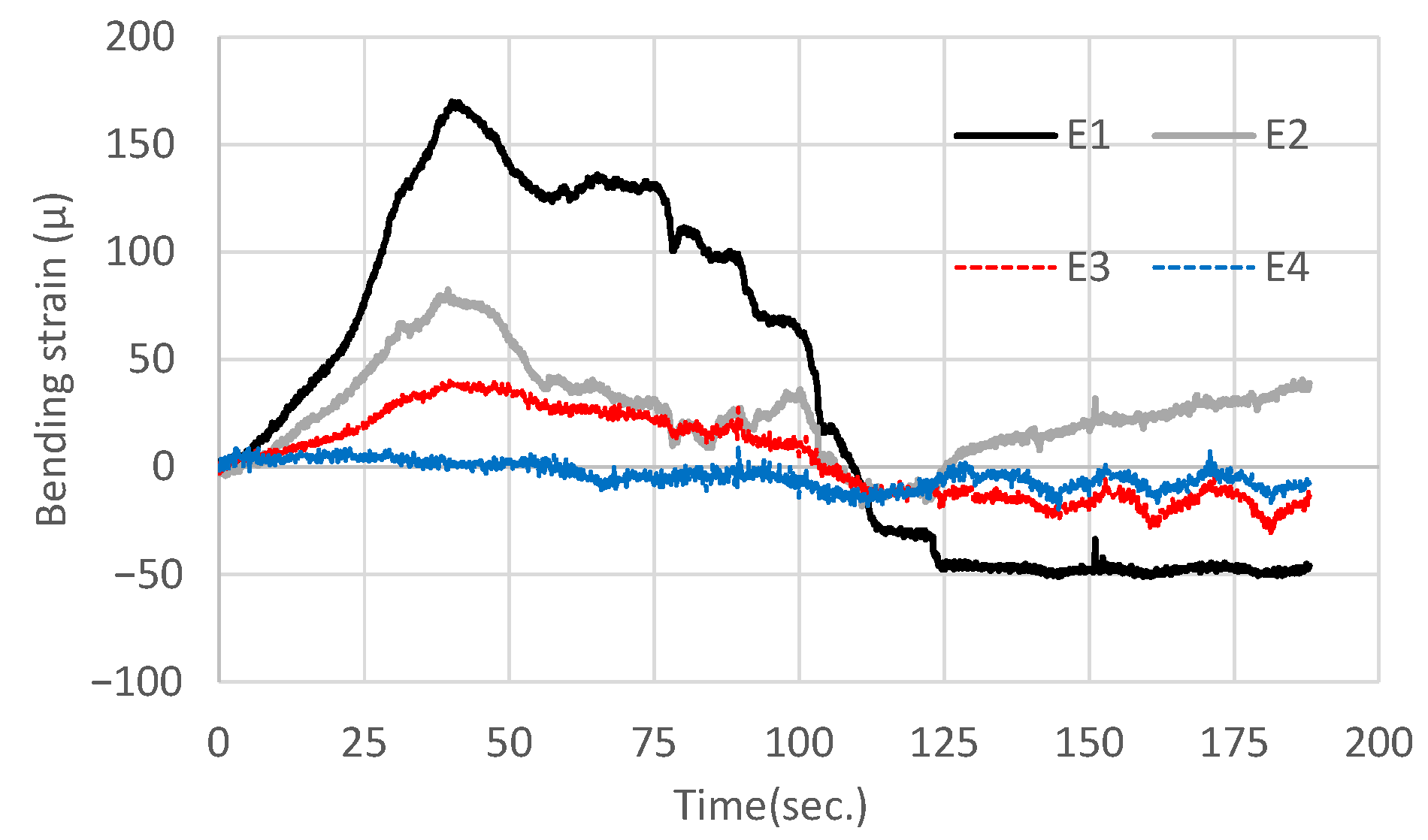

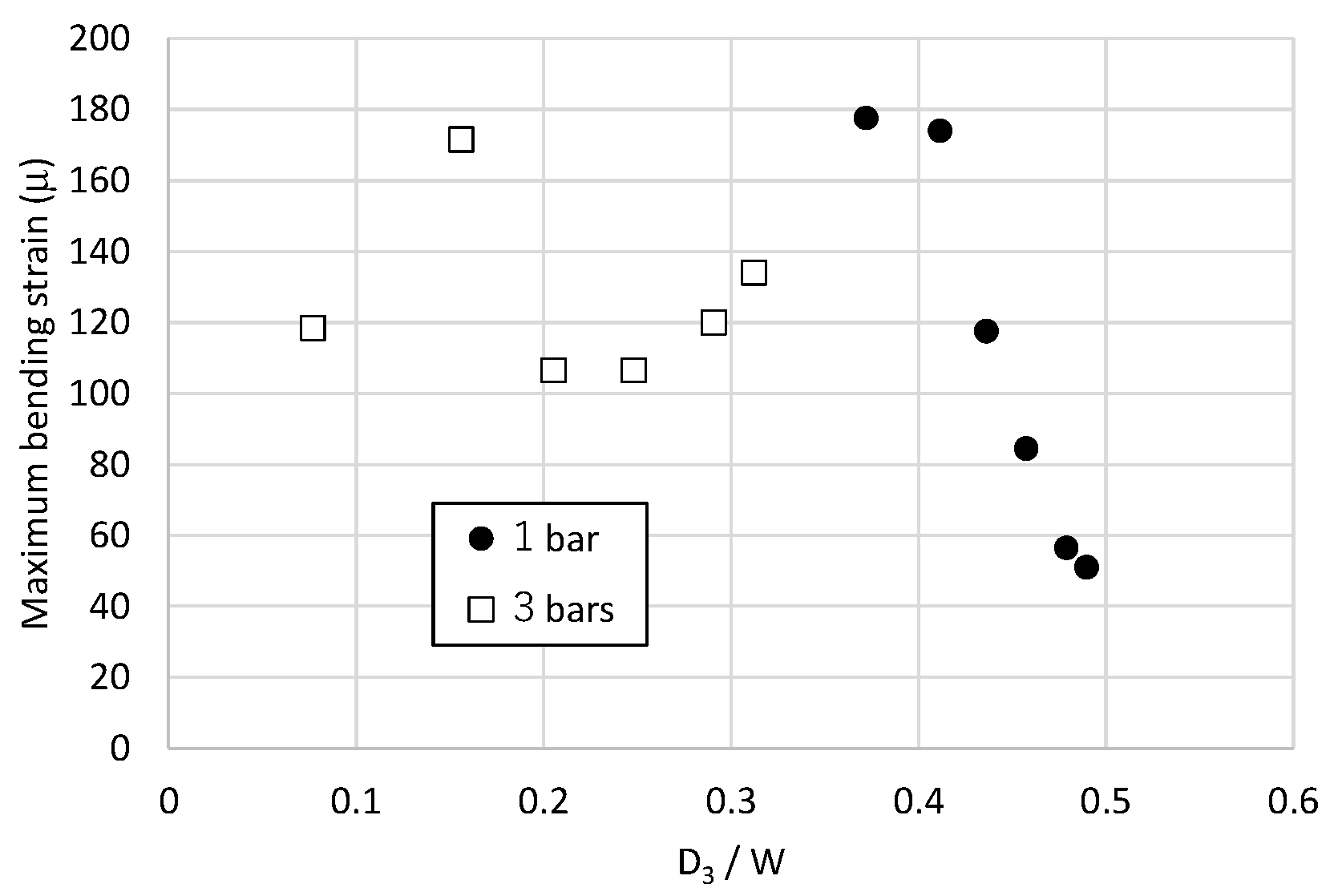
| Cases | Countermeasure | Number of | Diameter of | D/D1 |
|---|---|---|---|---|
| Core Bars | a Pile (mm) | |||
| Case A | No countermeasure | None | None | 0.00 |
| Case B-1 | Reinforcement insertion work | 1 | None (Core width 5 mm) | 0.02 |
| Case B-2 | 3 | 0.06 | ||
| Case C-1 | Reinforcement insertion work with pile | 1 | 10.0 | 0.04 |
| Case C-2 | 3 | 10.0 | 0.13 | |
| Case D-1 | 1 | 20.0 | 0.09 | |
| Case D-2 | 3 | 20.0 | 0.26 | |
| Case E-1 | 1 | 30.0 | 0.13 | |
| Case E-2 | 3 | 30.0 | 0.38 | |
| Case F-1 | 1 | 41.5 | 0.18 | |
| Case F-2 | 3 | 41.5 | 0.53 | |
| Case G-1 | 1 | 60.0 | 0.26 | |
| Case G-2 | 3 | 60.0 | 0.77 |
| (a) Soil | |||
| Unit weight per volume | γ | 10.06 | kN/m3 |
| Young’s Modulus | E | 29,300 | kN/m2 |
| Poisson’s ratio | ν | 0.33 | - |
| Friction angle | φ | 33 | degree |
| Cohesion | C | 15 | kN/m2 |
| (b) Core bar | |||
| Unit weight per volume | γ | 79.3 | kN/m3 |
| Young’s Modulus | E | 1.93 × 108 | kN/m2 |
| Poisson’s ratio | n | 0.33 | - |
| Moment of inertia of area | I | 1.12 × 10−11 | m4 |
| (c) Pipe | |||
| Unit weight per volume | γ | 12.00 | kN/m3 |
| Young’s Modulus | E | 3.00 × 106 | kN/m2 |
| Poisson’s ratio | n | 0.33 | - |
| Thickness | t | 4.00 | mm |
| (d) Interface | |||
| Spring modulus in perpendicular direction | kn | 1000 | kN/m2 |
| Spring modulus in shear direction | ks | 100 | kN/m2 |
Disclaimer/Publisher’s Note: The statements, opinions and data contained in all publications are solely those of the individual author(s) and contributor(s) and not of MDPI and/or the editor(s). MDPI and/or the editor(s) disclaim responsibility for any injury to people or property resulting from any ideas, methods, instructions or products referred to in the content. |
© 2025 by the authors. Licensee MDPI, Basel, Switzerland. This article is an open access article distributed under the terms and conditions of the Creative Commons Attribution (CC BY) license (https://creativecommons.org/licenses/by/4.0/).
Share and Cite
Fujiwara, K.; Wang, L. Study on the Effectiveness of Reinforcing Bar Insertion Work with a Circular Pipe. Geotechnics 2025, 5, 55. https://doi.org/10.3390/geotechnics5030055
Fujiwara K, Wang L. Study on the Effectiveness of Reinforcing Bar Insertion Work with a Circular Pipe. Geotechnics. 2025; 5(3):55. https://doi.org/10.3390/geotechnics5030055
Chicago/Turabian StyleFujiwara, Kakuta, and Lichao Wang. 2025. "Study on the Effectiveness of Reinforcing Bar Insertion Work with a Circular Pipe" Geotechnics 5, no. 3: 55. https://doi.org/10.3390/geotechnics5030055
APA StyleFujiwara, K., & Wang, L. (2025). Study on the Effectiveness of Reinforcing Bar Insertion Work with a Circular Pipe. Geotechnics, 5(3), 55. https://doi.org/10.3390/geotechnics5030055





